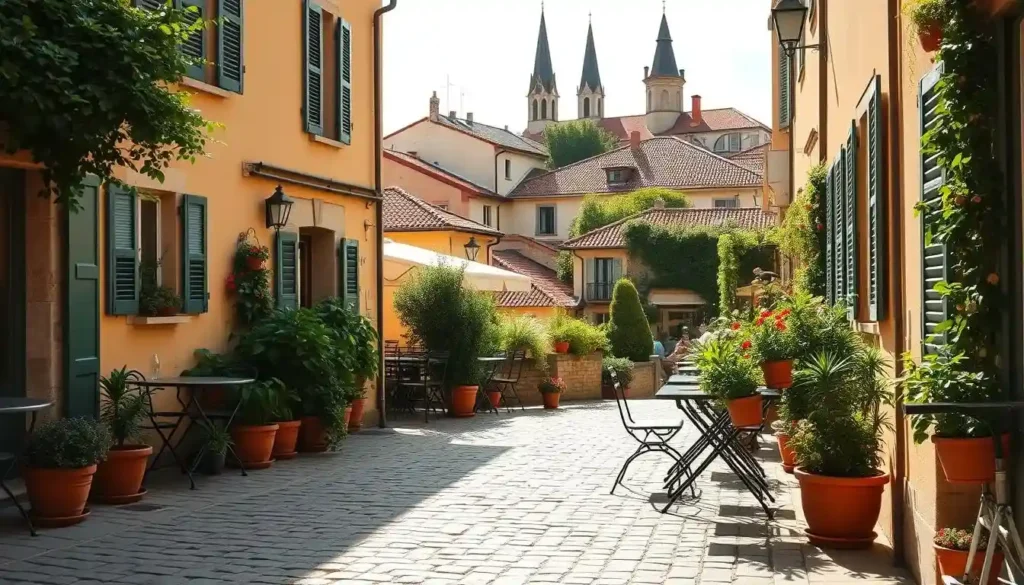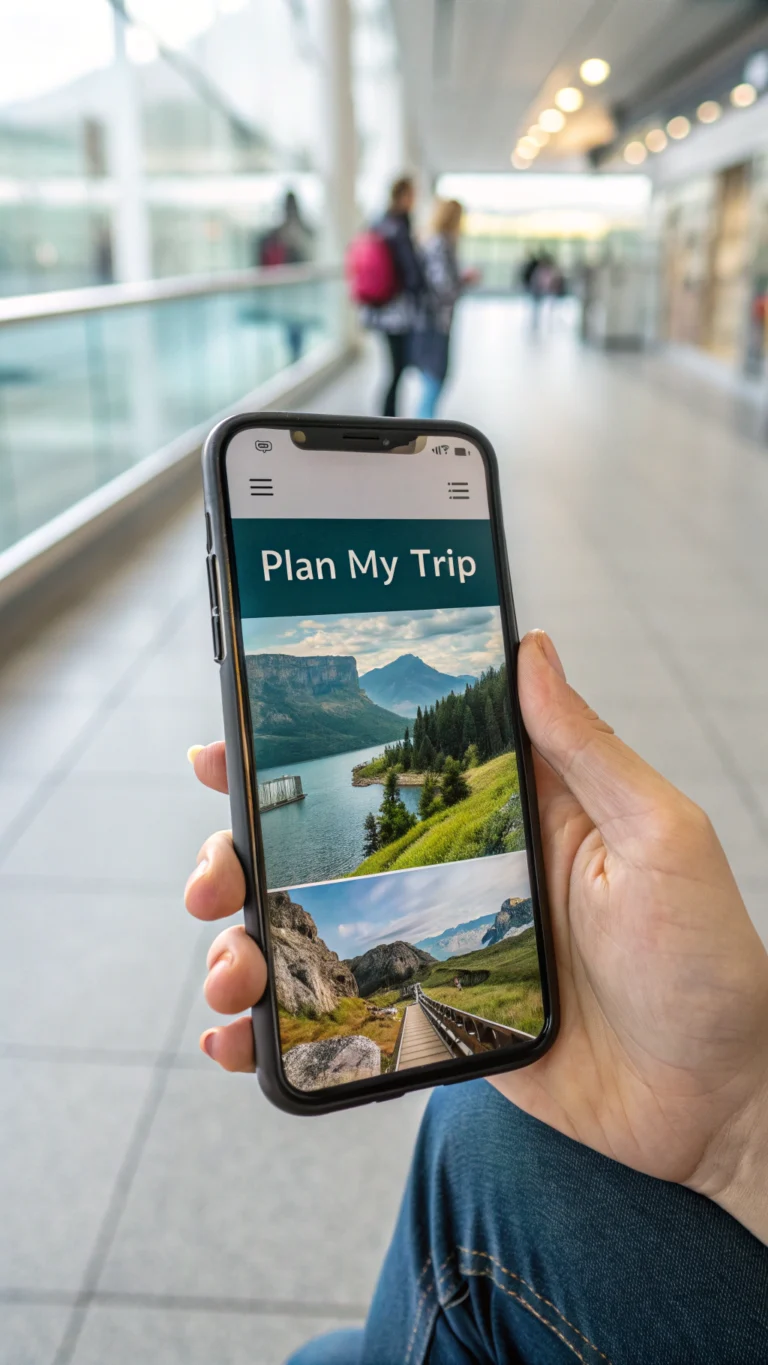How to Travel Europe on a Budget: 15 Smart Tips to Save Big
Exploring Europe doesn’t have to break the bank. With some planning and insider knowledge, you can enjoy a fulfilling European adventure on a budget.
Budget travel in Europe is more accessible than ever, with numerous cheap destinations waiting to be discovered. From cultural hotspots to breathtaking landscapes, Europe has something for every kind of traveler.

By following Europe travel tips from seasoned travelers, you can make the most of your trip without overspending. Whether you’re looking for hidden gems or popular spots, there’s a wealth of information available to help you plan your dream trip on a budget.
Key Takeaways
- Plan ahead to save on accommodations and flights.
- Explore affordable destinations in Europe.
- Use public transportation to get around.
- Take advantage of free walking tours.
- Enjoy local cuisine at budget-friendly eateries.
Planning Your Budget-Friendly European Adventure
To travel Europe without breaking the bank, it’s essential to start planning your trip well in advance. Early planning not only helps in securing better deals on flights and accommodations but also allows you to research and identify budget-friendly activities and destinations.
When to Start Planning for Maximum Savings
Starting your planning process at least 6 months in advance is recommended. This timeframe gives you ample opportunity to compare prices, look out for discounts, and make necessary adjustments to your itinerary. Early bird discounts on flights, hotels, and tour packages can significantly reduce your travel expenses.
Setting a Realistic Budget for European Travel
Setting a realistic budget is crucial for a stress-free European adventure. Begin by determining your overall budget and then break it down into categories such as transportation, accommodation, food, and activities. Prioritizing your spending based on your interests will help you make the most out of your trip.
Researching Destination Costs and Currency Exchange Rates
Understanding the cost of living in your chosen destinations is vital. Researching the average costs of meals, transportation, and attractions in each location will help you allocate your budget more effectively. Additionally, being aware of the local currency and exchange rates can save you money by avoiding unfavorable exchange rates and transaction fees.
By carefully planning your trip, setting a realistic budget, and researching your destinations, you can enjoy a fulfilling European adventure without overspending.
Choosing the Right Time to Visit Europe
Europe is a year-round destination, but the time you choose to visit can significantly impact your expenses. The continent’s diverse climate and array of seasonal events mean that timing your trip correctly can lead to substantial savings.
Tip1: Travel During Shoulder Season for Better Deals
The shoulder season, which typically falls in April-May and September-October, offers a great balance between comfortable weather and lower prices. During this time, popular destinations are less crowded, and you’re more likely to find discounts on accommodations and tourist attractions.
Tip2: Avoid Major European Holidays and Festivals
Major holidays and festivals, such as Oktoberfest in Germany or Carnival in Italy, attract large crowds and drive up prices. Planning your trip around these events can help you avoid inflated costs for accommodations, food, and activities.
Weather Considerations vs. Price Considerations
While good weather can enhance your travel experience, it’s often at the cost of higher prices. Consider visiting destinations during off-peak weather periods if you’re on a tight budget. For instance, visiting Southern Europe in the shoulder season can provide a pleasant climate without the peak season prices.
- Lower accommodation prices
- Less crowded popular attractions
- Better deals on flights and transportation
By carefully planning your trip according to the season, you can enjoy a more affordable and relaxed European vacation.
Smart Transportation Options Across Europe
Exploring Europe on a budget requires savvy use of its varied transportation network, including budget airlines, trains, and local transit. With numerous options available, travelers can significantly reduce their expenses by choosing the most cost-effective methods.
Leverage Budget Airlines and Flight Comparison Tools
Budget airlines have revolutionized air travel in Europe, offering affordable fares between destinations. To maximize savings, it’s essential to use flight comparison tools. Websites like Skyscanner, Kayak, and Google Flights allow travelers to compare prices across different airlines, including budget carriers.
Hidden Fees to Watch For
When booking budget flights, be aware of additional fees for checked baggage, food, and seat selection. These extras can quickly add up, negating the initial cost savings. Always check the airline’s fee structure before finalizing your booking.
Booking Strategies for Lowest Fares
To secure the lowest fares, consider booking flights well in advance or at the last minute, depending on the airline’s pricing strategy. Being flexible with your travel dates can also lead to significant savings.
Evaluate Rail Passes Against Point-to-Point Tickets
Europe’s rail network is renowned for its efficiency and scenic routes. When planning your itinerary, weigh the benefits of rail passes against point-to-point tickets. Rail passes can offer convenience and flexibility, especially for extensive travel plans.
| Type of Ticket | Advantages | Disadvantages |
| Rail Passes | Flexibility, convenience for multiple journeys | Can be expensive upfront, restrictions apply |
| Point-to-Point Tickets | Cost-effective for single journeys, no restrictions | Need to be booked in advance, less flexible |
Use Public Transportation and Walking Tours
Upon arriving at your destination, utilizing public transportation is an economical way to explore. Many cities offer affordable day or week passes for unlimited travel. Additionally, walking tours not only provide a glimpse into local culture but also help you navigate the city while getting exercise.
By combining budget airlines, strategic rail travel, and local public transportation, travelers can enjoy a cost-effective European adventure. Planning ahead and being mindful of the various options available can lead to significant savings, allowing you to allocate more resources to experiencing the rich history and culture that Europe has to offer.
Affordable Accommodation Strategies
Europe offers a wide range of accommodation options for travelers on a budget, from hostels to home shares. Whether you’re backpacking through major cities or exploring rural landscapes, finding the right place to stay can significantly impact your travel expenses.
Tip6: Consider Hostels, Guesthouses and Home Shares
Hostels, guesthouses, and home shares are popular alternatives to traditional hotels. They offer not only cost savings but also opportunities to meet fellow travelers and experience local cultures more intimately.
Safety and Comfort Considerations
When choosing budget accommodations, it’s essential to consider safety and comfort. Look for places with good reviews, secure entry systems, and amenities like free Wi-Fi and kitchen facilities.
Booking Platforms Comparison
| Platform | Features | Fees |
| Booking.com | Wide selection, user reviews | No booking fees |
| Airbnb | Home shares, unique stays | Service fees apply |
| Hostelworld | Specialized in hostels | Small booking fee |
Tip7: Try House-Sitting or Home Exchange Programs
House-sitting and home exchange programs are innovative ways to stay in Europe without the cost of accommodation. Platforms like TrustedHousesitters and HomeExchange.com connect homeowners with travelers.
“House-sitting allowed us to experience Europe like locals, staying in homes rather than hotels.” – Travel Bloggers
Tip8: Book Accommodations with Kitchen Access
Having kitchen access can significantly reduce food expenses. Booking accommodations with kitchen facilities allows you to prepare some meals, saving money and eating healthier.

By adopting these strategies, travelers can enjoy their European adventure without breaking the bank on accommodation. Whether it’s a hostel, guesthouse, or home share, there are plenty of affordable options to suit every traveler’s needs.
How to Travel Europe on a Budget: 15 Smart Tips to Save Big
Exploring Europe doesn’t have to break the bank, thanks to some savvy strategies for sightseeing and technology. As you plan your trip, consider how to make the most of your travel budget by leveraging discounts, free services, and mobile apps designed to make your journey smoother and more affordable.
Tip9: Get City Tourist Cards for Discounted Attractions
City tourist cards can be a fantastic way to save money on attractions and public transportation. These cards often offer discounted or free entry to many of the top sights, along with unlimited use of public transport. For example, the Paris Museum Pass grants access to over 60 museums and monuments, while the London Pass includes entry to many iconic landmarks like the Tower of London and Westminster Abbey. By calculating the cost of individual attraction entries against the price of the tourist card, you can quickly determine if it’s a worthwhile investment for your itinerary.
Tip10: Take Advantage of Free Walking Tours
Free walking tours are an excellent way to explore a new city while learning about its history and culture. These tours are typically led by knowledgeable guides who can provide insights that you might not discover on your own. While tips are appreciated, they’re not mandatory, making this an affordable way to get an overview of the city. Many cities across Europe offer such tours, so be sure to check out local options.
Tip11: Use Mobile Apps for Real-Time Deals and Savings
In today’s digital age, mobile apps can be a traveler’s best friend. There are numerous apps designed to help you navigate cities, find deals, and save money.
Best Budget Travel Apps for Europe
- Hopper: For finding and booking cheap flights.
- Citymapper: For navigating public transportation systems.
- Google Translate: For overcoming language barriers.
Offline Map Solutions
Having access to offline maps can be a lifesaver when traveling abroad, saving you from expensive data roaming charges. Apps like Maps.me and Google Maps (with offline functionality) allow you to download maps for offline use, ensuring you can navigate even without an internet connection.
By incorporating these strategies into your travel plans, you can enjoy a rich and fulfilling European adventure without straining your budget. Whether it’s through discounted attractions, informative free tours, or the convenience of mobile apps, there’s no shortage of ways to save.
Eating Well Without Breaking the Bank
Europe offers a rich culinary experience that can be enjoyed on a budget. One of the joys of traveling through Europe is sampling the local cuisine, from freshly baked croissants in France to authentic pizzas in Italy. However, dining out can quickly become expensive. Fortunately, there are several strategies to enjoy Europe’s food scene without breaking the bank.
Tip12: Shop at Local Markets and Grocery Stores
Shopping at local markets and grocery stores is an excellent way to experience the local food culture while saving money. Many European cities have bustling markets where you can find fresh produce, cheeses, and baked goods. For instance, visiting a local market like La Boqueria in Barcelona or Borough Market in London can be a culinary adventure. You can purchase ingredients to prepare your own meals, especially if your accommodation includes kitchen facilities.

Finding Authentic Local Food at Reasonable Prices
To enjoy authentic local food without overspending, look for eateries that are popular with locals rather than tourists. These places often offer delicious meals at more reasonable prices. For example, trying a traditional gyro from a street vendor in Athens or enjoying a bowl of hearty soup at a local bistro in Prague can be both affordable and satisfying.
Strategic Splurging: When to Indulge and When to Save
While it’s essential to save money, it’s also important to indulge occasionally. Consider splurging on a special meal at a renowned restaurant or trying a unique local delicacy. To balance your budget, offset these splurges by saving on other meals or activities. For instance, you could enjoy a lavish dinner at a Michelin-starred restaurant and then opt for a simple, self-prepared breakfast.
| Meal Option | Average Cost | Recommendation |
| Eating at a local restaurant | $10-$15 | Highly recommended for authentic taste |
| Shopping at local markets | $5-$10 | Ideal for fresh produce and snacks |
| Splurging at a fine dining restaurant | $50-$100 | Recommended occasionally for a special experience |
By adopting these strategies, you can enjoy the rich culinary landscape of Europe without straining your budget. Whether you’re savoring a meal at a local eatery or shopping for ingredients at a market, there’s no need to compromise on flavor or experience.
Free and Low-Cost Sightseeing Opportunities
Discover the beauty of Europe without overspending by exploring free and low-cost sightseeing opportunities. Europe is a treasure trove of cultural and natural attractions, and with a little planning, you can experience the best of it without breaking the bank.
Tip13: Visit Museums on Free Entry Days
Many European museums offer free entry on certain days of the week or month. For example, the Louvre in Paris is free on the first Saturday of every month from 6 pm to 9:45 pm. Research the museums you want to visit and plan your itinerary around their free entry days.
Some popular museums with free entry days include:
- The British Museum in London (free every day)
- The National Gallery in London (free every day)
- The Prado Museum in Madrid (free on weekdays from 6 pm to 8 pm)
Tip14: Explore Lesser-Known Destinations and Neighborhoods
While famous landmarks like the Eiffel Tower and Big Ben are must-visits, exploring lesser-known areas can be just as rewarding. Venture into local neighborhoods to discover unique shops, cafes, and street art.
Hidden Gems in Major European Cities
Cities like Paris, Rome, and Barcelona have plenty of hidden gems waiting to be discovered. For instance, the Musée de Montmartre in Paris offers a glimpse into the history of the artistic neighborhood.
Day Trips to Affordable Nearby Towns
Consider taking day trips to nearby towns that are more budget-friendly. For example, visiting Annecy from Geneva or Bruges from Amsterdam can be a cost-effective way to experience more of Europe.
“The world is a book, and those who do not travel read only one page.” – Saint Augustine
By incorporating these tips into your travel plans, you can enjoy a rich and fulfilling European adventure without overspending.
Money Management While Traveling in Europe
Managing your finances effectively is crucial when traveling through Europe to ensure a stress-free trip. A well-planned financial strategy can help you save money and make the most of your travel experience.
Use No-Foreign-Transaction-Fee Credit Cards
One of the simplest ways to save money while traveling abroad is by using a credit card that doesn’t charge foreign transaction fees. Cards like Chase Sapphire Preferred and Capital One Venture are popular choices among travelers. These cards can save you around 3% on every purchase made abroad.
Smart ATM Usage and Cash Management
Using ATMs abroad can be convenient, but it’s essential to be aware of potential fees. Look for ATMs affiliated with your bank to minimize charges. It’s also a good idea to have some local currency for when you arrive. Avoid exchanging money at airports or tourist areas, as the rates are often unfavorable.
Budgeting Apps and Tools for Travelers
Utilizing budgeting apps can help you keep track of your expenses while traveling. Apps like Trail Wallet and Mint allow you to monitor your spending in real-time, making it easier to stick to your budget. You can also set alerts for overspending and categorize your expenses for better financial management.
| Tool/App | Purpose | Cost |
| Trail Wallet | Expense tracking | Free |
| Mint | Budgeting and expense tracking | Free |
| Chase Sapphire Preferred | No-foreign-transaction-fee credit card | $95 annual fee |
Conclusion: Enjoying Europe Without Financial Stress
Traveling Europe on a budget is achievable with the right strategies. By planning carefully and making smart choices, you can have a fulfilling European adventure without breaking the bank. From leveraging budget airlines and rail passes to finding affordable accommodations and dining options, there are numerous ways to save.
Using city tourist cards, taking advantage of free walking tours, and shopping at local markets can also help reduce costs. With stress-free travel Europe in mind, you can focus on enjoying the rich history, culture, and natural beauty that Europe has to offer. By applying the tips outlined in this article, you can make the most of your budget travel Europe experience.
Whether you’re exploring famous cities or visiting lesser-known destinations, affordable Europe travel is within reach. With a little planning and creativity, you can create unforgettable memories without financial stress. So pack your bags, grab your camera, and get ready to experience all that Europe has to offer.
FAQ
What is the best time to visit Europe on a budget?
The best time to visit Europe on a budget is during the shoulder season, typically in April-May or September-October, when prices are lower and the weather is still pleasant.
How can I save money on flights to Europe?
To save money on flights to Europe, consider using budget airlines, flight comparison tools like Google Flights or Skyscanner, and booking in advance to secure the best deals.
What are some affordable accommodation options in Europe?
Affordable accommodation options in Europe include hostels, guesthouses, home shares like Airbnb, and house-sitting or home exchange programs, which can offer significant savings.
How can I eat affordably while traveling in Europe?
To eat affordably while traveling in Europe, shop at local markets and grocery stores, try street food or authentic local eateries, and consider accommodations with kitchen access to prepare your own meals.
What are some free or low-cost sightseeing opportunities in Europe?
Europe offers many free or low-cost sightseeing opportunities, including visiting museums on free entry days, exploring lesser-known destinations and neighborhoods, and taking advantage of free walking tours.
How can I manage my money while traveling in Europe?
To manage your money while traveling in Europe, use no-foreign-transaction-fee credit cards, be mindful of ATM fees, and consider using budgeting apps to track your expenses.
Are there any specific credit cards that are recommended for travel to Europe?
Yes, credit cards with no foreign transaction fees, such as the Chase Sapphire Preferred or the Capital One Venture, are highly recommended for travel to Europe as they can save you money on transaction fees.
How can I avoid overspending while traveling in Europe?
To avoid overspending while traveling in Europe, set a realistic budget, track your expenses, and prioritize free or low-cost activities and attractions.







